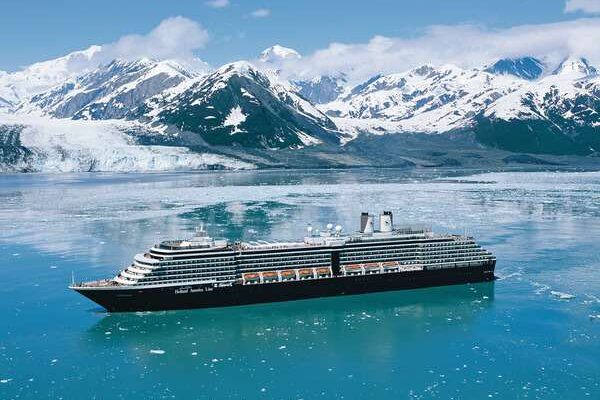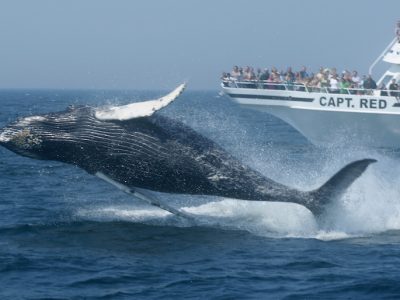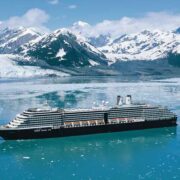
1. The Prized Catch: Rainbow Trout Explained
When it comes to freshwater fishing, few species captivate anglers quite like the rainbow trout. Known for its vibrant colors and fierce fighting spirit, the rainbow trout is an iconic fish that can be found in various waterways across the world. Let’s delve into the beautiful and colorful world of rainbow trout to discover what makes them such a prized catch.
Discover the Beautiful and Colorful World of Rainbow Trout
The rainbow trout, scientifically known as Oncorhynchus mykiss, is a species of salmonid native to North America. The name “rainbow” refers to the stunning colors that adorn the fish’s body. From rich pinks and oranges to shades of vibrant red and green, the rainbow trout is truly a sight to behold.
One of the most distinctive features of the rainbow trout is its dotted pattern, also known as “parr marks,” which is often visible on younger fish. As the trout mature, they develop a more pronounced pink or red stripe along their sides, showcasing their true beauty.
In addition to their impressive appearance, rainbow trout are also known for their impressive size. While they can vary in size depending on their habitat and food availability, it’s not uncommon to find rainbow trout weighing between 2 to 8 pounds. In fact, the world record catch for a rainbow trout weighed a whopping 48 pounds!
Unraveling the Secrets of Rainbow Trout’s Habitat and Behavior
Rainbow trout are highly adaptable fish, making them excellent survivors in a variety of aquatic environments. They can be found in rivers, streams, lakes, and even coastal waters, making them a popular target for both freshwater and saltwater anglers.
When it comes to their behavior, rainbow trout are known for their voracious appetites and aggressive feeding habits. They are opportunistic eaters, consuming a wide range of prey such as insects, crustaceans, small fish, and even small mammals. This diverse diet allows them to thrive in different ecosystems and makes them susceptible to a wide range of fishing techniques.
Rainbow trout are also known for their impressive stamina and fighting ability once hooked. Anglers often find themselves engaged in thrilling battles as they attempt to reel in these muscular fish. It’s this combination of beauty, size, and fighting spirit that has made rainbow trout a sought-after catch among anglers of all skill levels.
2. Fishing in the Last Frontier: Exploring Alaska’s Angling Paradise
For anglers looking for the ultimate fishing experience, Alaska is a dream destination. Known as the “Last Frontier,” Alaska offers some of the most untouched and pristine fishing spots in the world. The abundance of rainbow trout and the stunning natural beauty make it an angling paradise.
The Untouched Wilderness: Why Alaska is a Dream Destination for Anglers
Alaska’s vast and untouched wilderness is a sight to behold. With over 3 million lakes, countless rivers, and a coastline that stretches over 6,000 miles, the opportunities for fishing in Alaska are endless. The lack of development and human disturbance in many of these areas ensures that fishermen can experience the true beauty of nature while casting their lines.
What makes Alaska even more special is its commitment to conservation and sustainable fishing practices. The state has implemented strict regulations to protect its fisheries, ensuring that future generations of anglers can continue to enjoy the bountiful harvest Alaska has to offer.
Unforgettable Experiences: Tales of Rainbow Trout Fishing in Alaska
Alaska is home to some of the largest and most abundant rainbow trout populations in the world. From the mighty Kenai River to the remote streams of Bristol Bay, anglers can find themselves in trout fishing paradise. Imagine standing waist-deep in a crystal-clear river, surrounded by snow-capped mountains, as you cast your fly to entice a trophy-sized rainbow trout. It’s an experience that anglers from around the globe dream of.
One of the most legendary fishing destinations in Alaska is the Kvichak River in Bristol Bay. This world-renowned river is teeming with rainbow trout, and anglers flock here year after year in search of the fish of a lifetime. With opportunities to catch rainbow trout exceeding 30 inches in length, the Kvichak River truly lives up to its reputation as a trophy trout fishery.
The Best Time to Visit: Seasons and Timing for Successful Trout Fishing
While Alaska offers fantastic rainbow trout fishing year-round, the best time to visit depends on the specific region and the angler’s preferences. Generally, the summer months between June and September are considered prime fishing season in Alaska.
During this time, rainbow trout are in their feeding prime, taking advantage of the abundance of food in the rivers and lakes. The extended daylight hours also provide anglers with more opportunities to fish and enjoy the breathtaking landscapes Alaska has to offer.
It’s worth noting that each season in Alaska offers unique fishing opportunities. In the early summer, trout can be found near the river mouths, taking advantage of food sources from the ocean. As the summer progresses, they migrate upstream to cooler waters, offering anglers the chance to test their skills in more remote locations.
3. Becoming a Master Angler: Essential Tips and Techniques
Mastering the art of Alaska rainbow trout fishing requires a combination of skill, knowledge, and patience. From selecting the right gear to employing effective techniques, here are some essential tips to help you maximize your chances of success on the water.
Essential Gear: Must-Have Equipment for Rainbow Trout Fishing
When it comes to gear, choosing the right equipment for rainbow trout fishing can make a significant difference in your success. Here are some essential items to consider:
- Fishing Rod and Reel: Opt for a lightweight spinning or fly fishing rod and reel combo suitable for trout fishing.
- Fishing Line: Use a low visibility monofilament or fluorocarbon fishing line with a pound test appropriate for the size of fish you intend to catch.
- Hooks, Lures, and Bait: Carry a variety of hooks, lures, and bait options to cater to different fishing conditions and trout feeding preferences.
- Tackle Box: Invest in a quality tackle box to keep your fishing gear organized and easily accessible while on the water.
- Fishing Accessories: Don’t forget essentials such as a landing net, forceps or pliers for hook removal, and sunscreen to protect yourself from the harsh Alaskan sun.
Techniques that Bring Success: Proven Methods for Catching Rainbow Trout
Rainbow trout can be targeted using various fishing techniques, depending on the fishing conditions and angler’s preference. Here are a few tried and tested methods:
Fly Fishing: Fly fishing is arguably the most popular method for catching rainbow trout. With its roots deeply embedded in Alaskan angling culture, fly fishing allows anglers to present artificial flies in a lifelike manner, enticing even the most cautious trout.
Bait Fishing: Bait fishing with natural or artificial baits can also be highly effective when targeting rainbow trout. Using techniques such as drift fishing or bottom fishing with baited hooks, anglers can entice trout into biting.
Spin Fishing: Spin fishing involves casting and retrieving lures or bait using spinning gear. This versatile technique allows anglers to cover a large area of water and can be particularly effective when trout are actively feeding near the surface.
The Etiquette of Catch and Release: Respecting the Sport and the Fish
While the thrill of catching rainbow trout is undeniable, it’s crucial to practice responsible fishing and prioritize the well-being of the fish. Catch and release is widely encouraged to sustain fish populations and ensure the future of the sport.
When practicing catch and release, here are some guidelines to follow:
- Use barbless hooks or crimp down the barbs on your hooks to minimize injury to the fish.
- Handle fish with wet hands or a wet cloth to protect their delicate skin from damage.
- Keep the fish in the water as much as possible and avoid unnecessary handling or extended exposure to air.
- Revive the fish by gently moving it back and forth in the water to ensure it has regained its strength before release.
4. Fishing Beyond the Waters: Exploring Alaska’s Wildlife and Landscapes
Alaska is not just about fishing; it offers a world of breathtaking landscapes and incredible wildlife encounters. When you’re not casting your line, take the time to explore the wonders that await beyond the waters.
The Majestic Wildlife: Spotting Bears, Eagles, and other Alaska Icons
Alaska is home to some of the most iconic wildlife species in North America. From the majestic brown bears to the awe-inspiring bald eagles, wildlife enthusiasts will find themselves in paradise. Imagine witnessing a brown bear catch a salmon in its powerful jaws or capturing the perfect photograph of a bald eagle soaring through the sky.
While exploring Alaska’s wilderness, always remember to maintain a safe distance from wildlife and observe their behavior from a respectful distance. This ensures both your safety and the well-being of the animals.
Immersed in Nature: Discovering Alaska’s Breathtaking Landscapes
Alaska’s landscapes are nothing short of extraordinary. From towering mountains to massive glaciers, the state’s natural beauty will leave you in awe. Take a scenic hike through the Denali National Park, where you can witness the grandeur of North America’s tallest peak, Mount Denali. Or embark on a glacier cruise in Kenai Fjords National Park, where you can witness massive ice formations calving into the ocean.
Whether you’re a seasoned photographer or simply looking to reconnect with nature, Alaska’s landscapes offer endless opportunities for exploration and adventure.
Beyond Fishing: Other Outdoor Activities to Explore in Alaska
While fishing is undoubtedly a top attraction in Alaska, the state offers a myriad of other outdoor activities for visitors to enjoy. From kayaking and whitewater rafting to wildlife safaris and dog sledding, there’s something for everyone.
Embark on a thrilling dog sledding adventure and experience the timeless tradition of mushing through the Alaskan wilderness. Or paddle through the calm waters of Prince William Sound, where you can spot sea otters, seals, and even whales.
As you plan your trip to Alaska, consider incorporating these activities into your itinerary for a well-rounded and unforgettable Alaskan adventure.
FAQ
Question: How can I identify a rainbow trout?
Answer: Rainbow trout can be identified by their vibrant colors, ranging from rich pinks and oranges to shades of vibrant red and green. They also have a dotted pattern, known as “parr marks,” visible on younger fish. As they mature, they develop a more pronounced pink or red stripe along their sides.
Question: What is the best time to visit Alaska for rainbow trout fishing?
Answer: The best time to visit Alaska for rainbow trout fishing is during the summer months between June and September. This is when the trout are in their feeding prime and taking advantage of the abundance of food in the rivers and lakes.
Question: What gear do I need for rainbow trout fishing in Alaska?
Answer: Essential gear for rainbow trout fishing in Alaska includes a lightweight spinning or fly fishing rod and reel combo suitable for trout fishing, low visibility monofilament or fluorocarbon fishing line, a variety of hooks, lures, and bait options, a tackle box for organization, and fishing accessories such as a landing net, forceps or pliers, and sunscreen.
Question: What techniques are effective for catching rainbow trout?
Answer: There are several techniques that can be effective for catching rainbow trout, including fly fishing, bait fishing, and spin fishing. Fly fishing is popular and allows anglers to present artificial flies in a lifelike manner. Bait fishing involves using natural or artificial baits, and spin fishing involves casting and retrieving lures or bait using spinning gear.
Question: Is catch and release encouraged for rainbow trout fishing in Alaska?
Answer: Yes, catch and release is widely encouraged for rainbow trout fishing in Alaska. This practice helps sustain fish populations and ensures the future of the sport. Guidelines for catch and release include using barbless hooks or crimping down the barbs, handling fish with wet hands or a wet cloth, keeping the fish in the water as much as possible, and reviving the fish before release.
Question: What other wildlife can I encounter in Alaska?
Answer: Alaska is home to a variety of iconic wildlife species such as brown bears and bald eagles. Visitors to Alaska may also have the opportunity to spot other species like sea otters, seals, and whales.
Question: What outdoor activities can I enjoy in Alaska besides fishing?
Answer: In addition to fishing, visitors to Alaska can enjoy activities such as kayaking, whitewater rafting, wildlife safaris, and dog sledding. These activities allow you to experience the natural beauty and adventure that Alaska has to offer.
Question: What are some must-see landscapes in Alaska?
Answer: Alaska boasts breathtaking landscapes including towering mountains and massive glaciers. Some must-see locations include Denali National Park, home to North America’s tallest peak, Mount Denali, and Kenai Fjords National Park, where you can witness massive ice formations calving into the ocean.
Useful Resources:
- Fish Alaska Magazine
- NOAA Fisheries – Alaska Region
- Alaska Department of Fish and Game
- Travel Alaska
- Denali National Park and Preserve
- Alaska Wilderness League
- Alaska.org
- Kenai Fjords National Park










